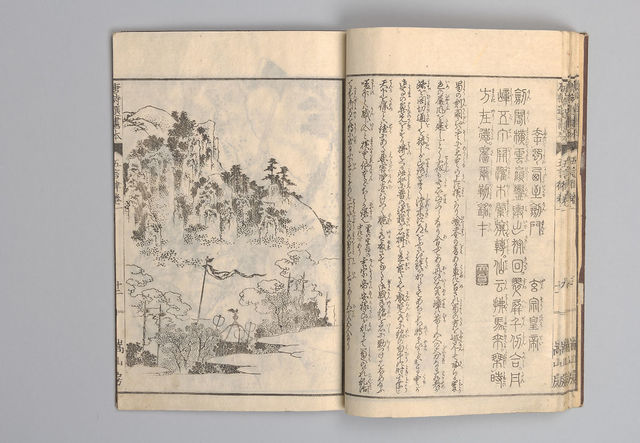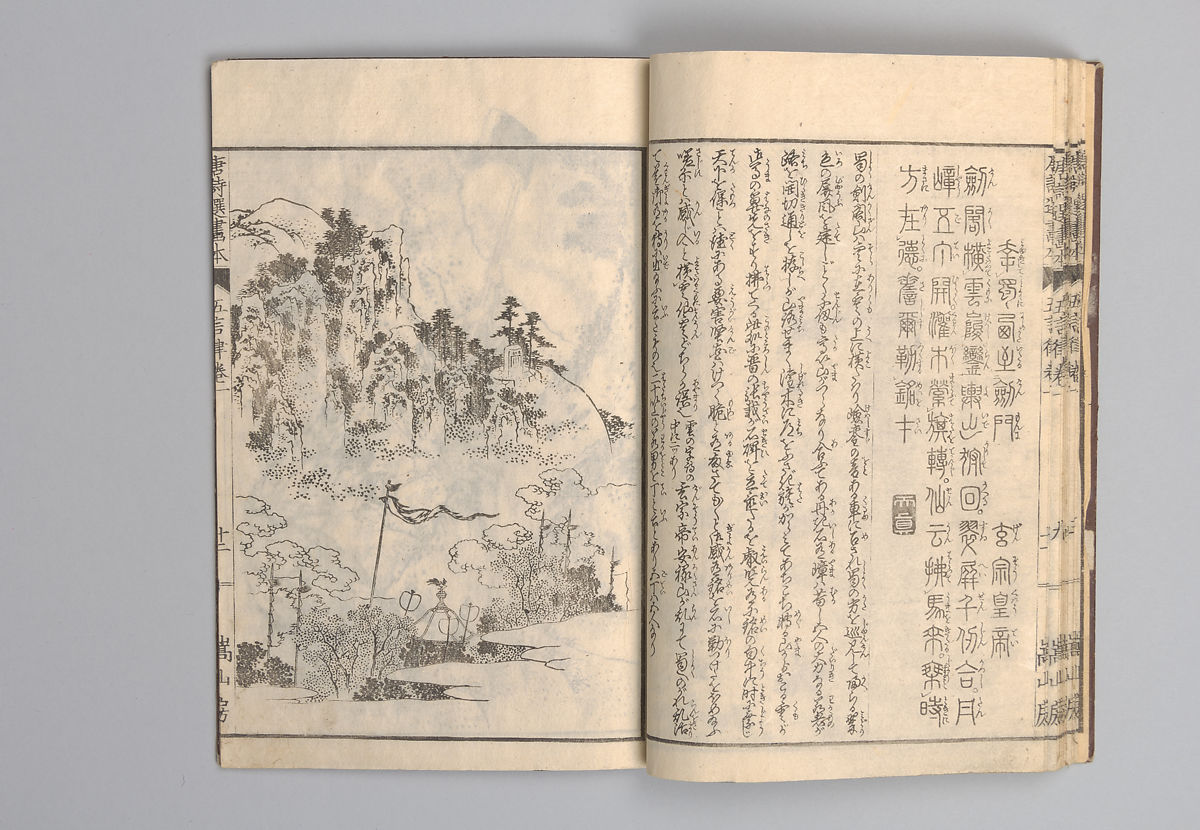Illustrated "Anthology of Tang-Dynasty Poems" in Five-Syllable Lines

Included in a collection of poems from 7th century China, there are a number of monochrome prints by Hokusai. In this particular image, craggy and towering mountain peaks emerge from the mist and low-hanging clouds. Spears and banners peek out from the trees, revealing a procession of people hidden below. On a bluff above, there appears to be a tablet or monument of some kind- the convoy’s destination, perhaps. This print reveals a number things about Hokusai as an artist. Like some other artists in Japan, Hokusai rigorously studied Chinese art and culture. Sometimes grouped under the term“eccentric”, these artists sought to incorporate elements of Chinese art into their own work. This piece- with its monochrome palette, deliberate brushstrokes, use of negative space, and minimal human presence are reminiscent of Zen Buddhist paintings. Buddhism, which made its way to Japan through China in the 13th century, had a profound influence on Japanese art from that point forward.
Full description
Katsushika Hokusai Illustrated “Anthology of Tang-Dynasty Poems” in Five-Syllable Lines, 1836 Format: 5 volumes, fukurotoji (pouch binding); chūbon each: 9 × 6 3/16 in. (22.8 × 15.7 cm)
Included in a collection of poems from 7th century China, there are a number of monochrome prints by Hokusai. In this particular image, craggy and towering mountain peaks emerge from the mist and low-hanging clouds. Spears and banners peek out from the trees, revealing a procession of people hidden below. On a bluff above, there appears to be a tablet or monument of some kind- the convoy’s destination, perhaps. This print reveals a number things about Hokusai as an artist. Like some other artists in Japan, Hokusai rigorously studied Chinese art and culture. Sometimes grouped under the term“eccentric”, these artists sought to incorporate elements of Chinese art into their own work. This piece- with its monochrome palette, deliberate brushstrokes, use of negative space, and minimal human presence are reminiscent of Zen Buddhist paintings. Buddhism, which made its way to Japan through China in the 13th century, had a profound influence on Japanese art from that point forward.
Comments
to view and add comments.
Annotations
No one has annotated a text with this resource yet.
- typeImage
- created on
- file formatjpeg
- file size215 kB


